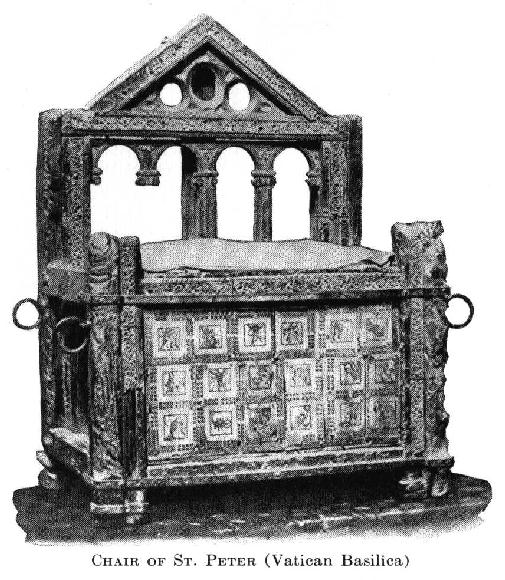
In the Catholic calendar up until at least 1955, January 18 was the Feast of the Saint Peter’s Chair at Rome. The “chair” is an Old Testament sign of magisterial authority, as Christ Himself gave witness:
“Saying: The scribes and the Pharisees have sitten on the chair of Moses. All things therefore whatsoever they shall say to you, observe and do: but according to their works do ye not. For they say, and do not.” (Matthew 23:2–3, D-R)
The commemoration of Peter’s chair in rome honors the preeminent magisterial authority of Saint Peter to whom was given the Keys of the Kingdom. Peter’s office as the Vicar of Christ recalls the promise of God to the “royal steward” or “vicar” in the royal household of the Davidic king. This prophecy promises that the king’s steward will “become a throne of honor”:
“And I will lay the key of the house of David upon his shoulder: and he shall open, and none shall shut: and he shall shut, and none shall open. And I will fasten him as a peg in a sure place, and he shall be for a throne of glory to the house of his father.” (Isaiah 22:22–23, D-R)
Yet did Saint Peter as the first Vicar of Christ have his own physical cathedra (Greek: “chair”)? There is a third century anti-Marcionite poem that seems to testify to this historicity of Peter’s cathedra:
Hac cathedra, Petrus qua sederat ipse, locatumMaxima Roma Linum primum considere iussit.– Adversus Marcionem (Patrologia Latina II, 1099)
The Latin translates:
“On this chair whereupon Peter himself satThe great Rome placed Linus and commanded him to sit.”
Saint Linus is of course the successor of Saint Peter, that is the second pope of Rome. Is this cathedra, Petrus qua sederat ipse, a literally chair or is it merely a poetic allusion to Peter’s authority? I suppose that there is no way to know for sure, but Tertullian (cf. De præscriptione hæreticorum, 36) and others seem to suggest or assume that a true physical chair kept in Rome had been that of Saint Peter.
Regardless, the chair depicted above is the traditional “Chair of Saint Peter”. In Old Saint Peter’s, this chair was prominently placed in the baptistry and the Pope would sit on it in order to confer the sacrament of Confirmation. This chair and custom are confirmed to as early as AD 366.
Today, it is enshrined in the apse of Saint Peter’s Basilica in Rome. I don’t know whether carbon dating has been performed on it. If you’re aware of any studies or archeological investigations, please send them my way.
Do you enjoy reading Canterbury Tales by Taylor Marshall? Make it easier to receive daily posts. It’s free. Please click here to sign up by Feed or here to sign up by Email. You can also browse Taylor’s books about Catholicism at amazon.com by clicking here.


Comments Policy: I reserve the right to delete comments that are offensive or off-topic. If your comment contains a hyperlink to another site, your comment automatically goes into "Comments Purgatory" where it waits for release by way of moderation.